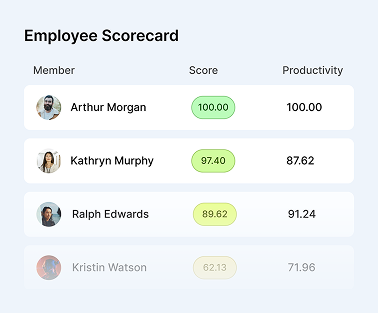Employee Activity Reports: What to Look for and How to Analyze Them

It’s no secret that employee productivity is crucial to the success of any organization. That’s why managers are tasked with reviewing employee activity reports regularly.
However, do you know what to look for in an activity report? And how can you use the data to improve employee productivity?
Sometimes, activity reports can look colorful and packed with a lot of stuff.
In this blog post, we’ll tell you what that stuff is and how you can use employee activity reports to your advantage. Stay tuned for more!
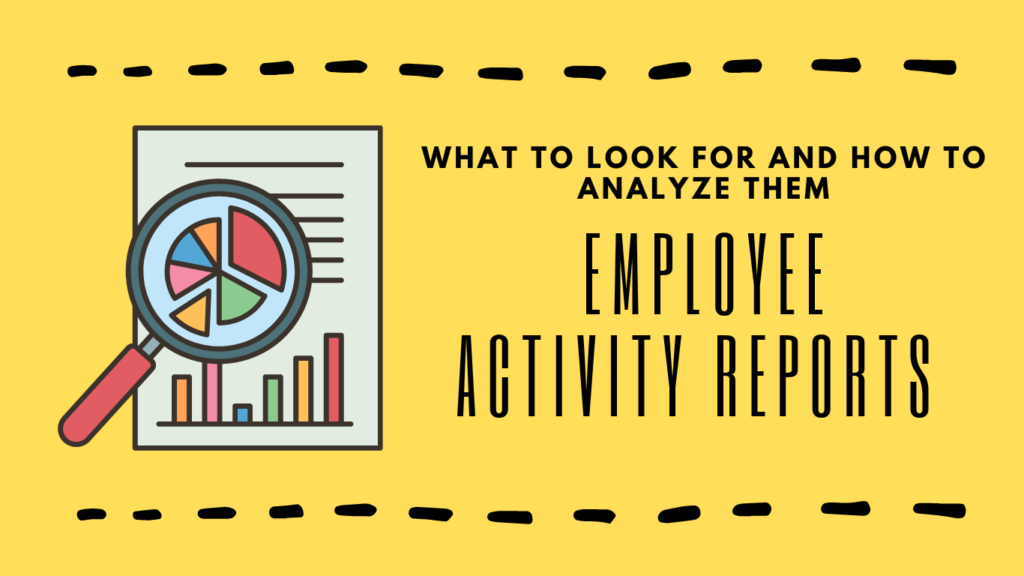
Beyond the Clock: Measuring What Truly Drives Productivity
Being an employee is not only about clocking in and clocking out of work, the approach is more holistic than that! Yes, it is important to be productive while at work, but employee productivity goes beyond that. It is also about being engaged in company culture, exhibiting the company values, and working towards common goals.
An employee is an extension of the company they work for, and their productivity reflects on the company as a whole. That is why it is essential for managers to understand employee productivity, what factors influence it, and how they can use employee activity reports to improve it.
While there are other ways to measure employee productivity, activity reports as one of the best ways to give managers a snapshot of employee behavior. Let’s look at it more in-depth!
What is an Employee Activity Report?
Employee activity reports are documents that track employee productivity and activity. Managers use these reports to monitor employee performance and identify areas for improvement. Employee activity reports can include information such as how much time employees spent on specific tasks, how many sales they made, or how many calls they made.
The purpose of employee activity reports is to provide managers with a snapshot of employee productivity. This is quite important considering, according to Zippia, the average employee is productive for only 60% of their workday—an office worker’s productivity decreases to 31%.
Employee activity reports can be generated in several ways. Some companies use employee time tracking software, while others rely on manual time sheets. Employees’ activity reports take a lot of forms, however, they got some standard guidelines to follow, let’s look at them!
What Does An Employee Activity Report Look Like?
If you are wondering what an employee activity report looks like. Here’s a quick overview of the different elements that are usually included in these reports:
- Employee name: This is typically the first piece of information that is included in an employee activity report. This is followed by the employee’s job title and department.
- Date range: The next information that is typically included in an employee activity report is the date range that is being reported on. This allows managers to see how employee productivity has changed over time.
- Task description: The next section of an employee activity report includes a description of the tasks that were completed during the reporting period. This can include information such as the number of sales made, calls made, or emails sent.
- Total time: The total time is the amount of time that an employee spent working during the reporting period. This can be expressed in hours, days, or weeks.
- Percent productive: The percent productive is a measure of how much time an employee spent working on productive tasks. This can be expressed as a percentage or as a ratio.
- Percent unproductive: The percent unproductive is a measure of how much time an employee spent working on unproductive tasks. This can be expressed as a percentage or as a ratio.
You can see below an example of what an employee activity report looks like! Colorful, right?
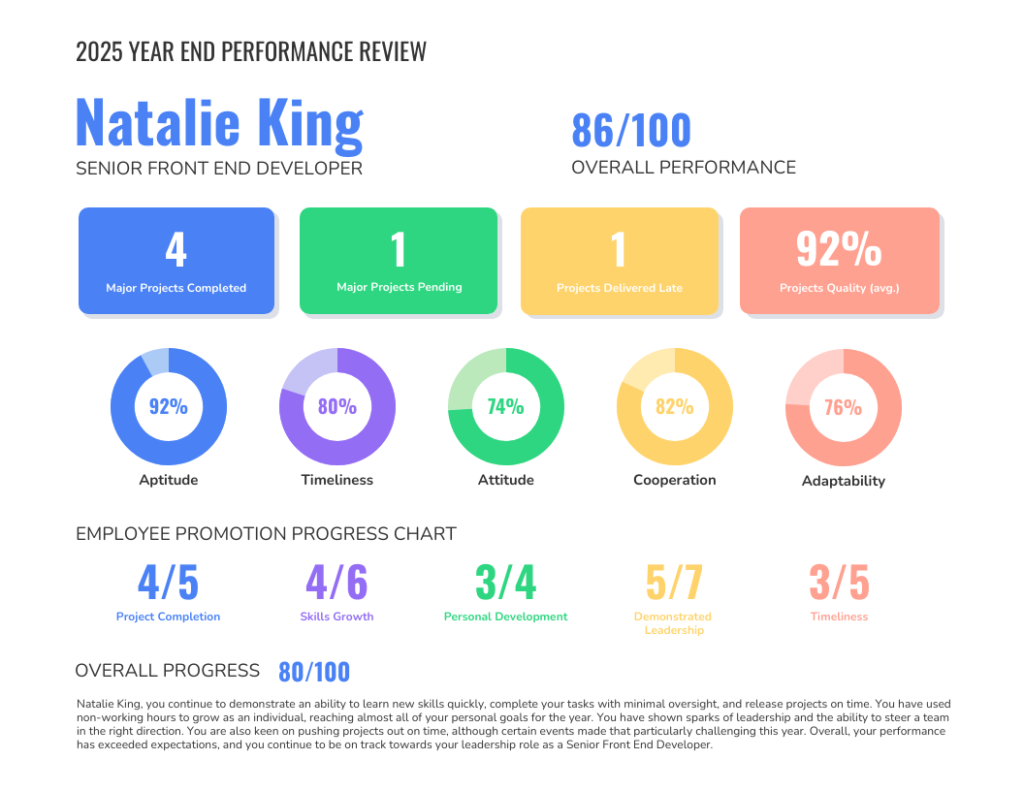
As you can see, employee activity reports can include a lot of different information. The specific information that is included in an employee activity report will depend on the company’s needs and objectives. Now, it’s time for being more detailed about it.
What to Look for in an Employee Activity Report?
When looking at employee activity reports, it’s important to pay attention to key metrics such as employee attendance, project completion rates, and overall productivity levels. It’s also helpful to track employee progress on individual tasks and specific goals.
1. Time Spent on Task
This metric can provide insights into employee productivity and focus. An employee who consistently demonstrates longer time spent on tasks may be able to produce high-quality work promptly.
On the other hand, an employee with shorter times spent on tasks may struggle with staying focused or completing tasks efficiently. It’s important to note that there may be valid reasons for variations in time spent on tasks, such as taking breaks or dealing with unexpected events.
In case you are managing remote employees, Monitask offers a great feature of an employee daily activity log designed to help individuals and teams increase productivity and efficiency.
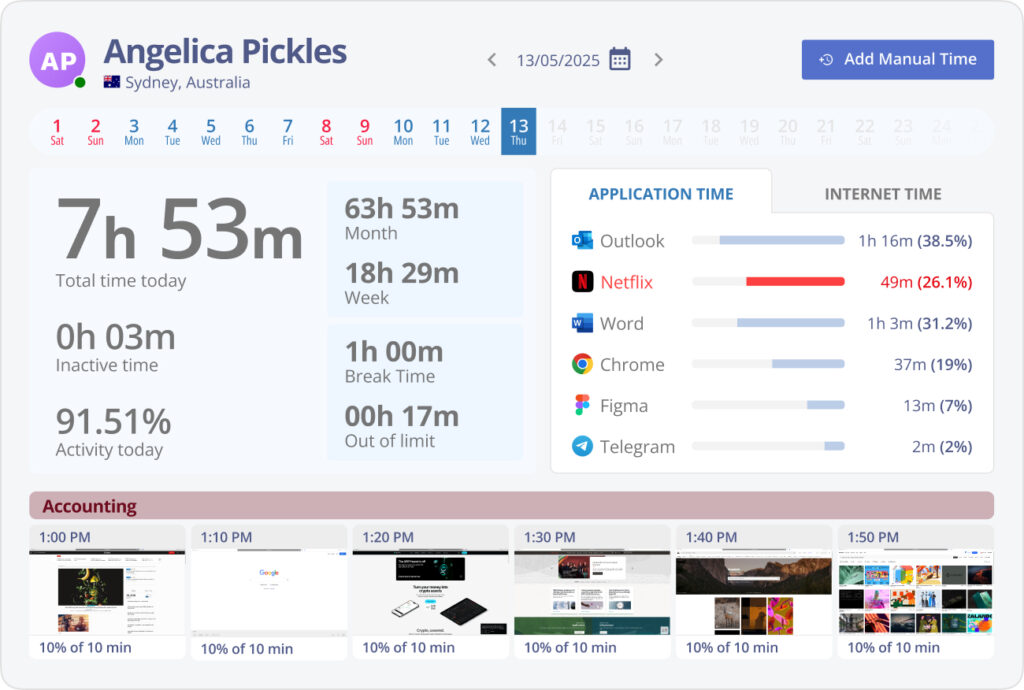
2. Quality of Work
Of course, time spent on tasks can be directly related to the quality of work delivered. This can be measured by looking at metrics such as the number of tasks completed, the accuracy and efficiency with which they were completed, and whether they met or exceeded expectations. As well, as through a combination of project success and manager/client feedback.
3. Number of Errors
When reviewing employee activity reports, it’s important to take a closer look at the number of errors. While mistakes are inevitable in any job, a consistently high error rate could be indicative of employee training deficiencies or a lack of attention to detail.
Additionally, considering the employee’s error rate in comparison with others in the same position can provide valuable insight into their performance.
4. Communication Skills
When reviewing employee activity reports, it is important to take a close look at an employee’s communication skills. This can include their ability to communicate effectively with superiors, colleagues, and customers.
It is also important to consider the quality and frequency of their written communications, such as emails and reports. Another crucial aspect of communication skills is the employee’s ability to listen actively and effectively interpret information.
5. Attendance and Punctuality
When analyzing employee activity reports, it is important to take attendance and punctuality into account. Consistent absences or lateness can negatively impact the workflow and productivity of a team.
However, there may be extenuating circumstances that play a role, such as emergencies or pre-approved time off. In these cases, it is important to consider the employee’s overall track record and whether they have consistently met their obligations in the past.
6. Customer Satisfaction
If you are in the sales industry, this is a very important metric! Gauging employee performance based on customer satisfaction levels can provide valuable insight into their ability to deliver quality service.
Tracking metrics such as call handling time and resolution rate can provide insight into an employee’s efficiency and effectiveness in dealing with customer inquiries. However, it is also important to keep track of things like customer feedback scores and repeat complaints, as these may indicate a lack of satisfactory resolution or poor communication on the employee’s part.
Good, we got the basics covered. What do you do with this information?
Maximize productivity of your business
Track employee productivity and simplify work with them
How to Analyze Employee Activity Reports?
As we told you before, employee activity reports can provide valuable insights into employee productivity. However, it is important to know how to properly analyze these reports. Here are a few tips:
How Often You Should Conduct Employee Activity Reports?
The frequency of employee activity reports will depend on the company’s needs.
Some companies may find that weekly reports are sufficient, while others may need daily or monthly reports.
It is important to determine the frequency of employee activity reports based on the company’s needs and objectives.
- Daily Report: A daily employee activity report can be used to track employee productivity on a day-to-day basis concerning the workload. This way you can assess if your employees can handle the assigned tasks, or you can give them more or to better distribute them among the staff.
- Weekly Report: A weekly employee activity report can be used to track employee productivity over a longer period. This report should include a summary of completed tasks, any upcoming projects or deadlines, as well as an analysis of productivity and effectiveness in meeting goals in that week.
- Monthly Report: At the end of each month, it is important to conduct an employee activity report to assess individual and team performance. This report should include clear metrics such as sales numbers, project completion rates, customer satisfaction scores, and attendance records. It can also include qualitative assessments from managers or peers on their job performance and collaboration skills.
- Yearly report: For this specific period, the company uses performance reviews to track employee activity reports, but when you gather all the information gathered through a whole year of activity reports you will see where each employee has excelled or struggled, and help identify any overall trends within the team.
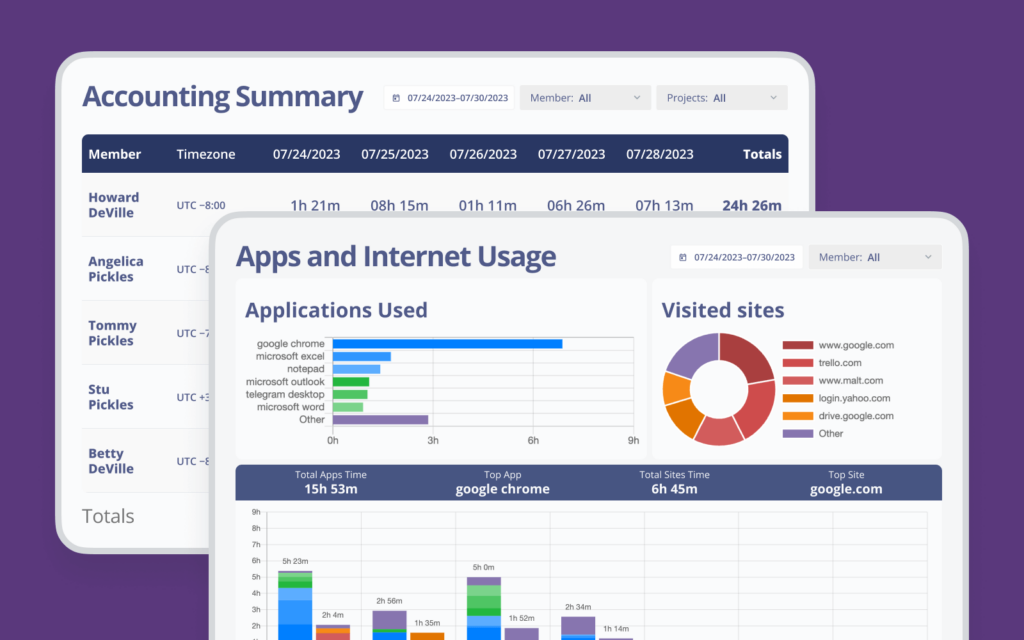
Employee Performance Reviews Vs. Employee Activity Reports
Employee performance reviews and employee activity reports serve similar purposes in that they track and assess an employee’s progress and performance. However, there are fundamental differences between the two.
Employee activity reports, on the other hand, focus more on specific tasks and assignments completed by the employee, rather than their overall performance as a whole. Both can be valuable tools for gauging and improving employee productivity, but it is essential to understand the distinctions between them.
Ultimately, a combination of both types of evaluations may provide an employer with the most comprehensive understanding of their employees’ strengths and weaknesses.
Conclusion: Turning Data into Actionable Productivity Insights
A well-run employee activity report can provide your company with a wealth of insights into employee productivity. However, it is important to know how to properly analyze these reports. The tips and advice in this article will help you get the most out of your employee activity reports.
It’s important to remember that employee activity reports are not the only indicator of an employee’s performance – they should also be supplemented with regular check-ins and performance evaluations. Overall, employee activity reports can provide valuable insight into the team and individual performance, as long as they are used in conjunction with other methods of assessment.
We hope this guide has helped you to understand employee activity reports. If you have any questions, feel free to roam around our blog post archive, we got a lot more!
-The Monitask Team
